- News
- Reviews
- Bikes
- Accessories
- Accessories - misc
- Computer mounts
- Bags
- Bar ends
- Bike bags & cases
- Bottle cages
- Bottles
- Cameras
- Car racks
- Child seats
- Computers
- Glasses
- GPS units
- Helmets
- Lights - front
- Lights - rear
- Lights - sets
- Locks
- Mirrors
- Mudguards
- Racks
- Pumps & CO2 inflators
- Puncture kits
- Reflectives
- Smart watches
- Stands and racks
- Trailers
- Clothing
- Components
- Bar tape & grips
- Bottom brackets
- Brake & gear cables
- Brake & STI levers
- Brake pads & spares
- Brakes
- Cassettes & freewheels
- Chains
- Chainsets & chainrings
- Derailleurs - front
- Derailleurs - rear
- Forks
- Gear levers & shifters
- Groupsets
- Handlebars & extensions
- Headsets
- Hubs
- Inner tubes
- Pedals
- Quick releases & skewers
- Saddles
- Seatposts
- Stems
- Wheels
- Tyres
- Health, fitness and nutrition
- Tools and workshop
- Miscellaneous
- Cross country mountain bikes
- Tubeless valves
- Buyers Guides
- Features
- Forum
- Recommends
- Podcast
£2,024.99
VERDICT:
Capable adventure/gravel/road bike with loads of versatility that delivers a beautiful 'steel' ride quality
Very comfortable frame and fork
Decent tyre clearances with mudguards
Short stem as standard can see you hitting your knees when out of the saddle
Weight:
10,550g
Contact:
At road.cc every product is thoroughly tested for as long as it takes to get a proper insight into how well it works. Our reviewers are experienced cyclists that we trust to be objective. While we strive to ensure that opinions expressed are backed up by facts, reviews are by their nature an informed opinion, not a definitive verdict. We don't intentionally try to break anything (except locks) but we do try to look for weak points in any design. The overall score is not just an average of the other scores: it reflects both a product's function and value – with value determined by how a product compares with items of similar spec, quality, and price.
What the road.cc scores meanGood scores are more common than bad, because fortunately good products are more common than bad.
- Exceptional
- Excellent
- Very Good
- Good
- Quite good
- Average
- Not so good
- Poor
- Bad
- Appalling
The Light Blue Robinson V2 Rival 1x exudes class and comfort, and thanks to plenty of stability and neutral handling allows you to just get away from it all, on the road or off. Its weight can sometimes be a limiting factor, though.
Ride
I love a quality steel frame and the Robinson didn't let me down. It's just so damn comfortable, in a way that only steel can deliver. The ride quality from the tubes feels soft, like it smooths the road surface out but still gives you all of the good vibration, so you can still feel the feedback and be involved in everything that is going on.
The Light Blue has achieved this without sacrificing stiffness. True, it's no oversized carbon fibre race bike, but it can take plenty of power through what in the modern world looks a tiny bottom bracket junction.
With the level of comfort on offer you can just waft along on the road for hours and hours without feeling like you are having to work too hard. Overall, it is a heavy 10.55kg, but thanks to the low ratios of the cassette offering you some bailout gears, you can spend a lot of time in the saddle just tapping out the pace.
Once up and rolling, it is quite surprising how quickly this bike can travel, the 38mm tyres singing along on the tarmac. The pictures you see here were taken before I picked the bike up; I flipped the stem over and put all of the spacers bar the 5mm one on top of the stem for a lower, more sporty position which definitely helped on the road.
That tyre clearance means you aren't limited to the road, either. This is one of those bikes that is great for getting out there and exploring, and if you spot an unexplored byway or gravel track out of the corner of your eye, the Robinson is totally able to take on the challenge.
The neutral steering that you get on the road feels faster on a loose surface, but the bike never becomes a handful, just even more fun to ride.
The Halo Twin Rail tyres don't have a lot of tread, and on really fine gravel they don't half move about a bit, but the Robinson never feels out of control. Even at speed on some gravel descents I was happy just to let the bike float around as it lets you know exactly what it is up to.
That lack of grip can be a bit of a pain when climbing as it takes barely anything to make the tyre slip; you have a bit of a challenge if you need to get out of the saddle for a steep climb – and herein lay another problem for me. I'm used to a 110mm stem, but the S/M size Robinson had a 80mm one and I kept whacking my knees on the handlebar.
Both of these things can be rectified easily and cheaply, and if you're going to be spending plenty of miles off-road then just get some knobbly tyres.
On the whole I found the Robinson really relaxing to ride wherever, really. A four-hour ride on the gravel tracks of Salisbury Plain was really enjoyable, and similar length jaunts on the road were just as much of a pleasure.
All of this talk of relaxation and comfort might make the Robinson sound a little dull, but it is far from it. It's a fun bike to ride on and off-road.
> Buyer’s Guide: 22 of the best gravel and adventure bikes
I enjoyed seeking out some downhills and just letting the Robinson go for it. With a 1,019mm wheelbase and that weight, there is a feeling of stability, and the Robinson carves a smooth line as you guide it through the apex.
If you have to brake hard in the bends there is a bit of flex in the steel fork legs but not enough to detract from the handling; you just kind of work around it, and to be honest if you're chucking a bike of this style into bends like a razor-sharp-handling race bike then you are only looking for trouble anyway.
Frame and fork
The Light Blue has selected Reynolds 725 chromoly steel for the frame which, thanks to being heat-treated for strength, uses butting to create thinner walled tubes, reducing weight without sacrificing stiffness.
The TIG welding is very neat and tidy and the whole frame and fork are finished off nicely in a robust paint job, available in either this Gloss Army Green or Gloss Gunmetal Grey.
If you are used to carbon or aluminium alloy bikes then the tube profiles look unbelievably skinny, especially the straight-through 1 1/8in head tube. As I said earlier, though, it all works from a stiffness point of view for the type of riding the Robinson is designed for.
Many will be pleased to see a threaded bottom bracket, especially as the Robinson can take full mudguards while still running 32mm tyres. It makes it a viable winter commuter and there will be no issues with water and grit sneaking in past a press-fit BB and causing creaking.
It can take a rear rack, too, if you want to go down the pannier route for riding to work.
Unlike most disc-equipped bikes, the Robinson uses quick releases rather than thru-axles, and I've got no issue with that. On high speed descents, and I'm talking 50-60mph here, I have felt the fork legs twisting when I've needed to brake to a standstill, caused by the disc being on one side of the fork. This is where a thru-axle comes into play, as threading the axle into the fork increases stiffness, reducing flex, but for the style of riding the Robinson is aimed at, it's not going to be an issue.
The Robinson is available in five sizes covering top tube lengths from 533mm through to 610mm, and the geometry is pretty typical of what we are used to seeing on road bikes that are capable of a bit of adventure or gravel riding.
This S/M has an effective top tube length of 550mm and a 140mm head tube at an angle of 71.5 degrees. The seat angle is 73.5 degrees, chainstays are 425mm and the wheelbase, as mentioned earlier, is 1,019mm.
If you like your stack and reach measurements, then you are looking at 566mm and 382mm respectively.
Groupset
As the name suggests, this Robinson comes based around a Sram Rival 1x groupset. It's also available in other builds: with Shimano's 105 groupset sporting either mechanical or hydraulic braking, a Sora groupset, or if your riding is going to be primarily gravel based, a 2x GRX group that includes a 46/30t chainset and 11-34t cassette.
Gearing on our test model is based around a 42-tooth chainset and an 11-36t cassette, which is a decent spread of gears if you live somewhere flat. A 42x36 bottom gear isn't that low, and while I didn't struggle with it on my daily rides, if you are spending your day exploring the local hills then you'll probably want an easier ratio to spin.
It's the same at the other end of the cassette too. On my favourite descents I'd be spinning out way earlier than I normally would on a 2x road setup.
The Rival choice is a good option for those who want the Robinson to be a bit of an all-rounder.
The shifting from the Rival group has a very precise feel and it changes gear well even when under load on a climb – impressive considering there are some quite large jumps across the sprockets.
The rear mech has a clutch which keeps the chain taut, so you don't have to worry about it dropping off the chainring on rough surfaces. It also reduces the chances of chain slap damaging your frame and means the drivetrain is much quieter when the going is rough.
Our test model has the £300 optional upgrade from TRP Spyre cable-operated brakes to Rival hydraulic; while the TRPs are some of the best mechanical stoppers out there, I'll take the performance benefits of the Rival hydraulic callipers any day of the week.
The Robinson gets 160mm-diameter rotors front and back, which is plenty of stopping power even if you decide to load it up with luggage for a bit of an adventure.
Once the pads were bedded in, stopping power was impressive, and you get plenty of feel through the lever for modulation.
Finishing kit
For the stem, seatpost and handlebar, The Light Blue has chosen Genetic products. I've tested quite a few of these in the past and it's good quality kit, especially for the money.
I like the Driser-16 bar, but like Mike said when he tested it, it does limit the fitting of lights and computers because of the riser section.
The bar is comfortable, though, with its ovalised tops giving a large platform for your hands, and the 16-degree flare of the drops gives you extra stability when descending at speed by increasing the width between your hands.
The Genetic Syngenic seatpost is simple to adjust and does everything a seatpost needs to. Perched atop that is the Gusset R Series saddle which The Light Blue describes as having a mountain biking bias. It certainly has more padding than I'm used to, but I found it quite comfortable even on those long rides where I was spending a lot of time seated.
Wheels and tyres
I'm a big fan of Halo wheels and these GXC Discs proved themselves to be tough, reliable and good performers on and off the road.
Many brands skimp on the wheelset to bring a bike in on price, but The Light Blue has invested well, with these having an rrp of £149.99 for the front and £269.99 for the rear.
They aren't that light at 780g for the front and 1,025g for the rear, but with a 28/32-spoke build they are plenty strong enough and will easily deal with the rigours of gravel riding.
Their internal width of 21mm (26mm external) works well with the 38mm tyres fitted and they are tubeless-ready, too.
As I mentioned earlier, the Halo Twin Rail tyres haven't got a huge amount of tread for off-road grip, but they are a good choice for a bike that is likely to cross over between tarmac and gravel.
They roll smoothly and offer decent levels of grip on the road, and I have had no issues with punctures throughout the test period. There aren't any signs of cuts through the tread, either.
Value
This version of the Robinson V2 has an rrp of £1,724.99 with the TRP Spyre brakes, but our upgrade to SRAM Rival hydraulic brakes brings the price up to £2,024.99.
Competition comes from the £1,799 Sonder Santiago, which gets a 2x Rival groupset including the hydraulic brakes as standard, but it is over 1.5kg heavier, which is noticeable, with the Robinson feeling more 'sporty'.
> Buyer’s Guide: 21 of the best steel road bikes and frames
The Robinson also feels more fun to ride than the £2,100 Bombtrack Audax, with its Columbus Cromor frame and carbon fibre fork. It has a Shimano 105 groupset, is a little bit heavier, and the cable-operated brakes are awful.
Conclusion
I liked riding around on the Robinson. In a test month where I also had some three-grand carbon aero bikes to blast about on, The Light Blue was great for just chilling out and getting out for a ride while focusing on the surroundings, thanks mostly to a really comfortable frame and fork.
Verdict
Capable adventure/gravel/road bike with loads of versatility that delivers a beautiful 'steel' ride quality
road.cc test report
Make and model: The Light Blue Robinson V2 Rival 1X
Size tested: S/M
About the bike
List the components used to build up the bike.
The Light Blue lists:
Frame Reynolds 725 Steel Tig welded
Fork DB Cro-mo Steel
Handlebar Genetic Driser 16
Stem Genetic STV
Bar Tape Genetic Padded Cork
Saddle Gusset R Series
Seatpost Genetic Syngenic
Rear Derailleur SRAM Rival 1 11 speed
STI Levers SRAM Rival 1 11 speed
Chain SRAM PC-1110 11 speed
Crankset SRAM Rival 1x 42T
Cassette SRAM PG-1130 11-36T
Brakes TRP Spyre
Wheels Halo GXC Disc 28/32
Tyres Halo Twin Rail 700x38 Skin Wall
Colour Gloss Army Green or Metallic Gunmetal Grey
Tell us what the bike is for and who it's aimed at. What do the manufacturers say about it? How does that compare to your own feelings about the bike?
The Light Blue says:
The Robinson's sprightly Reynolds 725 steel frame fused together with the latest trend in off-road high-performance '1X' gear systems. SRAM Rival 1X uses a single front chainwheel driving a wide ratio 11spd rear cassette to deliver a useful spread of gears in a simple to use, lightweight package.
Adding the 38C Twin Rail tyres into the mix allows you to discover that staying on tarmac roads is no longer the only option.
Genetic's fashionable new Driser 16 handlebar raises the effective handlebar height and includes a comfort and control enhancing 16 degree 'flare' in the drops.
Gusset's R-series MTB biased saddle and comfortable Genetic padded cork type handlebar tape bring quality contact points to the rider.
International Standard 160mm discs delivers braking confidence in all conditions with cable operated TRP Spyre calipers, or upgrade to a full hydraulic SRAM system for the ultimate in stopping ability.
Halo's premium level Vapour GXC Supadrive gravel wheelset offers future compatibility with tubeless tyres if desired.
By switching to narrower tyres, there's capacity for mudguards and a rear carrier to be added, morphing this SUV into a useful everyday commuter.
Where does this model sit in the range? Tell us briefly about the cheaper options and the more expensive options
The range starts with a Shimano Sora model (£1,199.99), then the 105 with cable operated brakes (£1,574.99) below the standard Rival model (our test bike has upgraded brakes, bringing it to £2,024.99). Above it are the 105 hydraulic model for £1,949.99, and Shimano GRX for £2,249.99.
Frame and fork
Overall rating for frame and fork
8/10
Tell us about the build quality and finish of the frame and fork?
The Robinson has a really good quality frame and fork, neatly welded and finished with a hardwearing paint job.
Tell us about the materials used in the frame and fork?
The frame is made using Reynolds 725 heat treated, double butted steel. The fork is also made using double butted steel.
Tell us about the geometry of the frame and fork?
The geometry is pretty relaxed for the road, which means it's fun off-road without feeling twitchy.
How was the bike in terms of height and reach? How did it compare to other bikes of the same stated size?
The reach and stack figures are exactly where I'd expect them to be for a bike of this type. The riser bar makes the Robinson slightly taller than the figures would suggest, though.
Riding the bike
Was the bike comfortable to ride? Tell us how you felt about the ride quality.
Yes. The frameset has a lovely comfortable 'steel' ride quality to it.
Did the bike feel stiff in the right places? Did any part of the bike feel too stiff or too flexible?
It's not the stiffest bike out there but well within the limits of what I'd expect a bike of this type to deliver.
How did the bike transfer power? Did it feel efficient?
Power transfer is fine and on the whole the Robinson does feel efficient.
Was there any toe-clip overlap with the front wheel? If so was it a problem?
No, none.
How would you describe the steering? Was it lively neutral or unresponsive? Neutral.
Tell us some more about the handling. How did the bike feel overall? Did it do particular things well or badly?
It is balanced on the road and works well off-road, remaining the right side of fun without being twitchy.
Which components had the most effect (good or bad) on the bike's comfort? would you recommend any changes?
The saddle offers plenty of padding for jaunts off-road.
Which components had the most effect (good or bad) on the bike's stiffness? would you recommend any changes?
The Halo wheels are impressively stiff.
Which components had the most effect (good or bad) on the bike's efficiency? would you recommend any changes?
The spread of gears from the cassette and chainring is decent enough for the majority of road riding but the lower ratios of the 2x GRX option would improve efficiency on tough gravel sections.
Rate the bike for efficiency of power transfer:
7/10
Rate the bike for acceleration:
7/10
Rate the bike for sprinting:
7/10
Rate the bike for high speed stability:
8/10
Rate the bike for cruising speed stability:
9/10
Rate the bike for low speed stability:
8/10
Rate the bike for flat cornering:
8/10
Rate the bike for cornering on descents:
7/10
Rate the bike for climbing:
7/10
The drivetrain
Rate the drivetrain for performance:
8/10
Rate the drivetrain for durability:
8/10
Rate the drivetrain for weight:
8/10
Rate the drivetrain for value:
7/10
Tell us some more about the drivetrain. Anything you particularly did or didn't like? Any components which didn't work well together?
The SRAM Rival groupset works well across the board. The shifting is crisp and precise even under load.
Wheels and tyres
Rate the wheels for performance:
8/10
Rate the wheels for durability:
9/10
Rate the wheels for weight:
7/10
Rate the wheels for comfort:
8/10
Rate the wheels for value:
7/10
Tell us some more about the wheels.Did they work well in the conditions you encountered? Would you change the wheels? If so what for?
A solid set of wheels and a welcome investment to the overall bike, there will be no need to upgrade any time soon.
Rate the tyres for performance:
7/10
Rate the tyres for durability:
8/10
Rate the tyres for weight:
7/10
Rate the tyres for comfort:
7/10
Rate the tyres for value:
6/10
Tell us some more about the tyres. Did they work well in the conditions you encountered? Would you change the tyres? If so what for?
Good tyres for road and other hardpacked surfaces but they'll struggle when it's loose under foot.
Controls
Rate the controls for performance:
7/10
Rate the controls for durability:
8/10
Rate the controls for weight:
7/10
Rate the controls for comfort:
7/10
Rate the controls for value:
6/10
Tell us some more about the controls. Any particularly good or bad components? How would the controls work for larger or smaller riders?
The Genetic kit works well. I especially like the Driser handlebar because of that 16-degree flare.
Your summary
Did you enjoy riding the bike? Yes
Would you consider buying the bike? Yes
Would you recommend the bike to a friend? Yes
How does the price compare to that of similar bikes in the market, including ones recently tested on road.cc?
The Sonder Santiago comes in cheaper for a similar build but it is quite a bit heavier; the £2,100 Bombtrack Audax is also heavier than the Robinson and it's not as fun a ride.
Rate the bike overall for performance:
8/10
Rate the bike overall for value:
6/10
Use this box to explain your overall score
The ride quality and comfort define the Robinson – it is such a fun and easy bike to cruise around or play about on. The only things I'd tweak would be the stem length and tyres for my style of riding.
About the tester
Age: 41
I usually ride: This month's test bike My best bike is: B'Twin Ultra CF draped in the latest bling test components
I've been riding for: Over 20 years I ride: Every day I would class myself as: Expert
I regularly do the following types of riding: time trialling, commuting, club rides, sportives, fixed/singlespeed,
Since writing his first bike review for road.cc back in early 2009 senior product reviewer Stu has tested more than a thousand pieces of kit, and hundreds of bikes.
With an HND in mechanical engineering and previous roles as a CNC programmer/machinist, draughtsman and development engineer (working in new product design) Stu understands what it takes to bring a product to market. A mix of that knowledge combined with his love of road and gravel cycling puts him in the ideal position to put the latest kit through its paces.
He first made the switch to road cycling in 1999, primarily for fitness, but it didn’t take long for his competitive side to take over which led to around ten years as a time triallist and some pretty decent results. These days though riding is more about escapism, keeping the weight off and just enjoying the fact that he gets to ride the latest technology as part of his day job.
Latest Comments
- dubwise 3 sec ago
So cyclists will be punished far heavier than killer drivers. Sums up the fkd up UK.
- HLaB 13 min 15 sec ago
I've done the 312 and other closed roads events like the Etape Caledonia and each time there is bad press like this in advance but on the day the...
- Rendel Harris 13 min 29 sec ago
It's not that surprising that Mr GrumpyGobshite hasn't seen the 20mph limit "stuck too [sic] in 47 years" as it was only reintroduced in 2004, it...
- Pub bike 29 min 8 sec ago
Spiral wound cables can expand and contract and possibly help with brake modulation, as well as make tighter bends. ...
- Burnsy Bhoy 1 hour 50 min ago
My TL200 rear light stopped working after 14 months - it seems IP ratings arent what they say on the tin! I have tried different brands and all...
- OnYerBike 8 hours 1 min ago
I've no idea what the situation is here, but I've seen plenty of "under construction" cycle lanes where there are only signs/barriers around the...
- the little onion 8 hours 8 min ago
whereas the whole point is that they didn't hit you this time
- Tom_77 8 hours 22 min ago
AIUI an entering-circulating accident [sic] would be when the vehicle entering the roundabout fails to give way to the vehicle circulating.
- chrisonabike 8 hours 40 min ago
Which is great - but you can only take a bus which exists eg. is going somewhere near where you want to go, when you want to go....
- mdavidford 10 hours 32 min ago
Erm, does someone need counting lessons?



































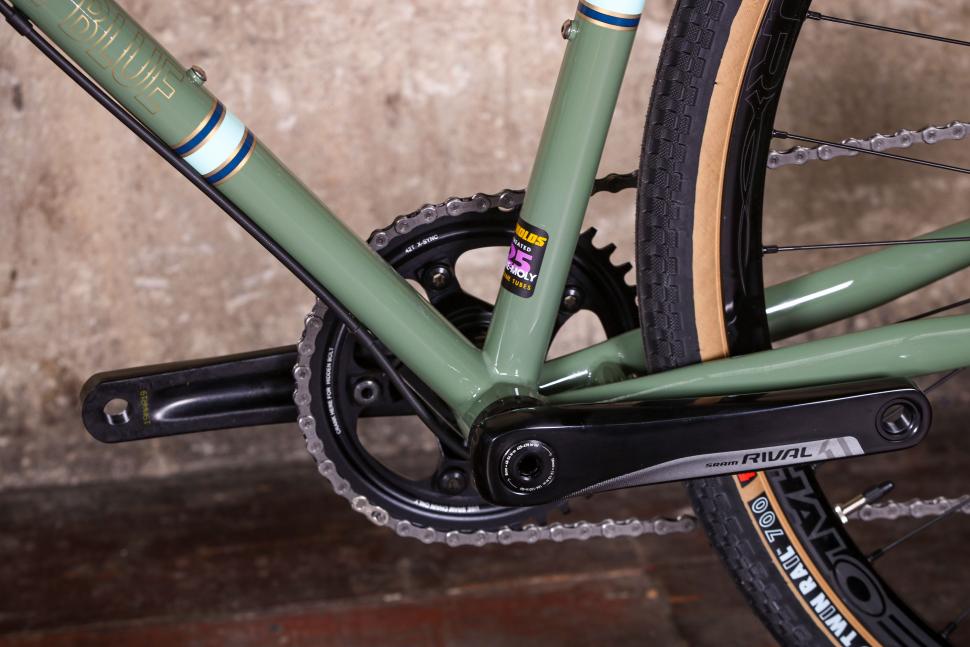
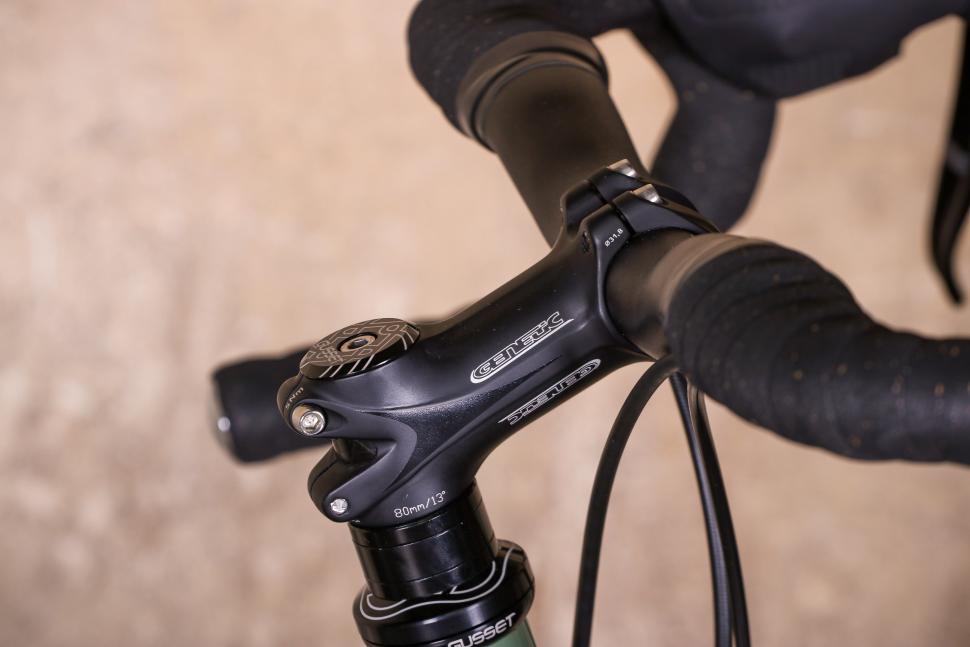
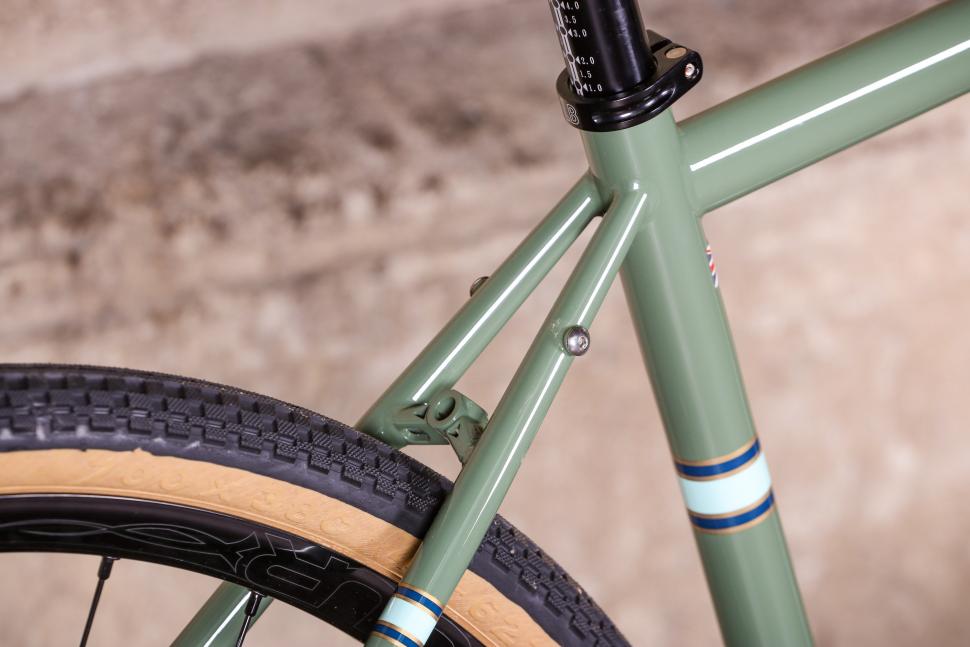
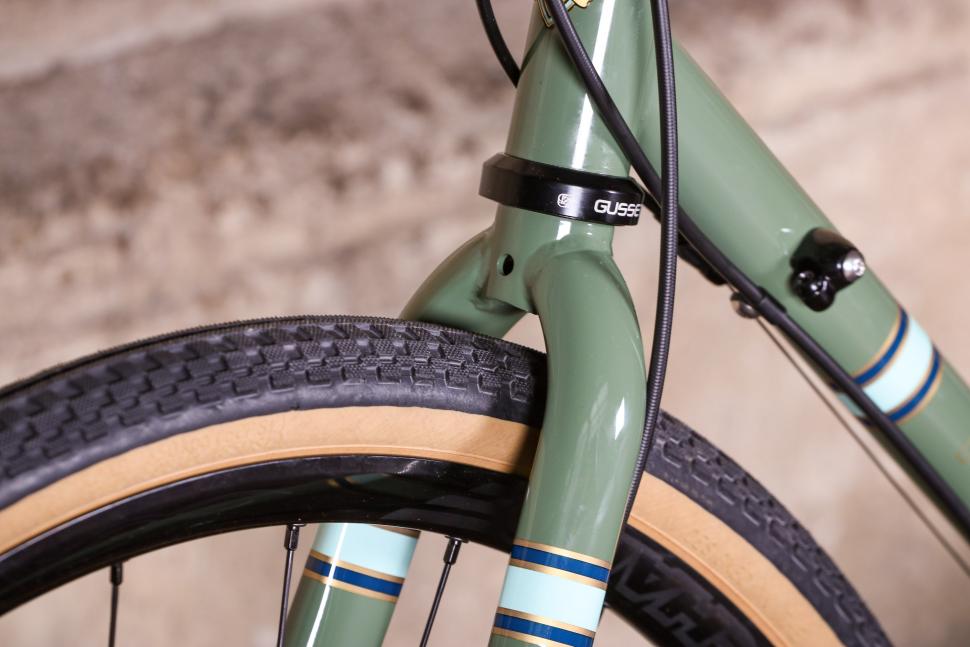

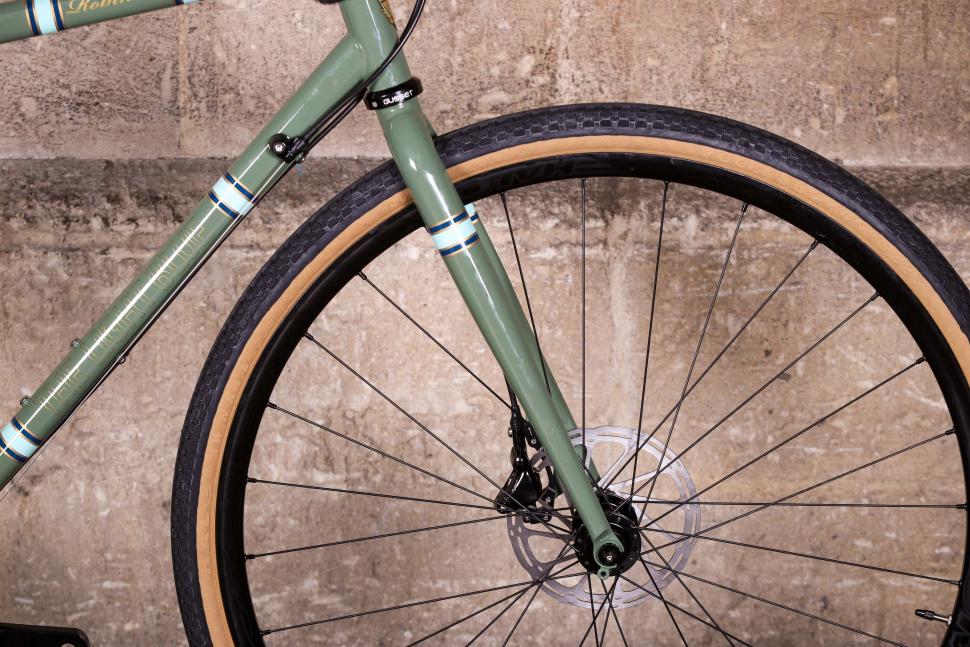

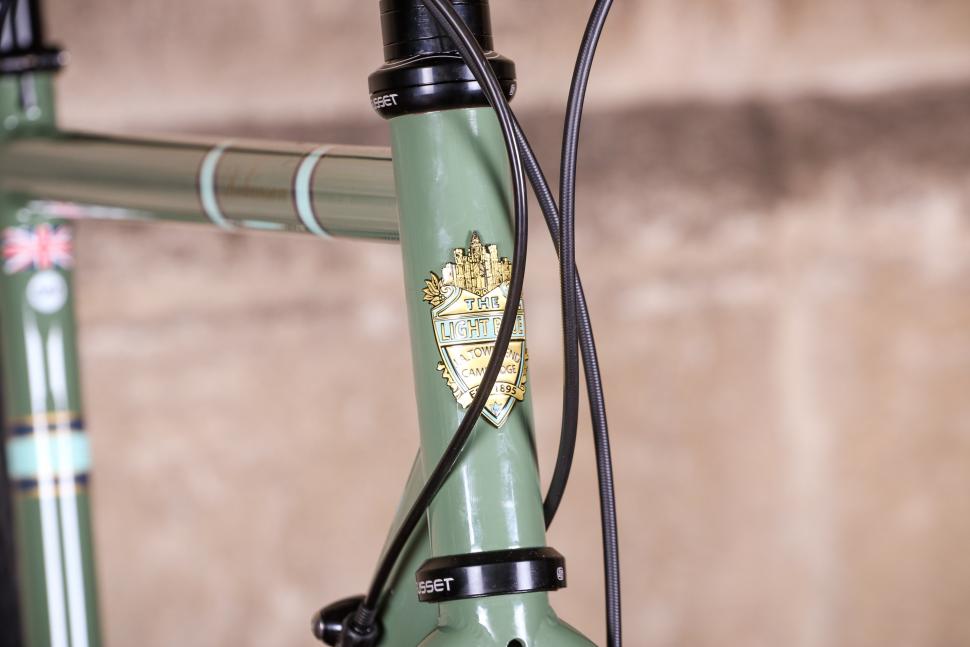
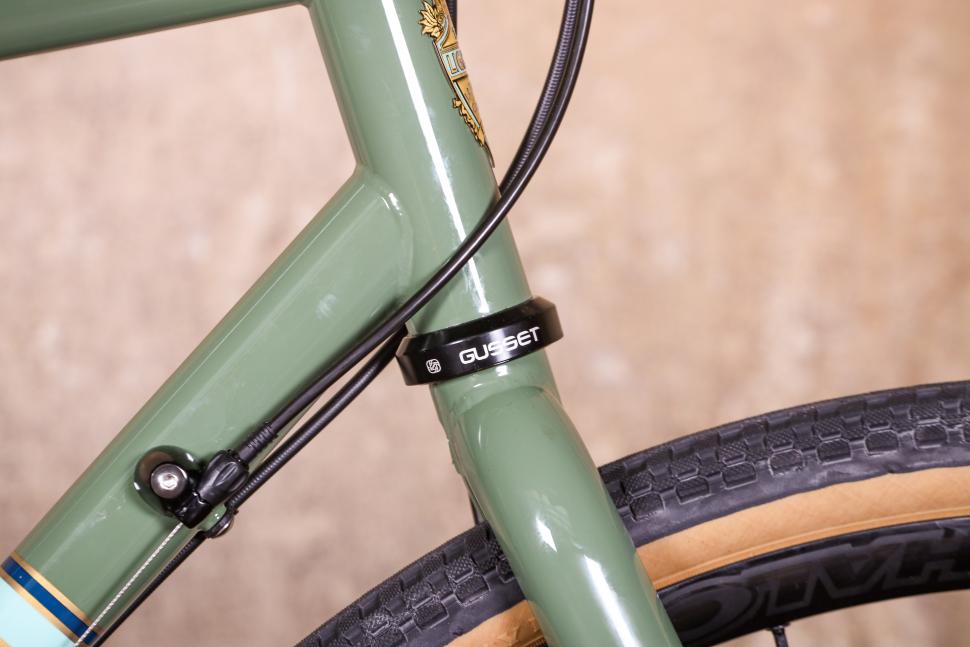
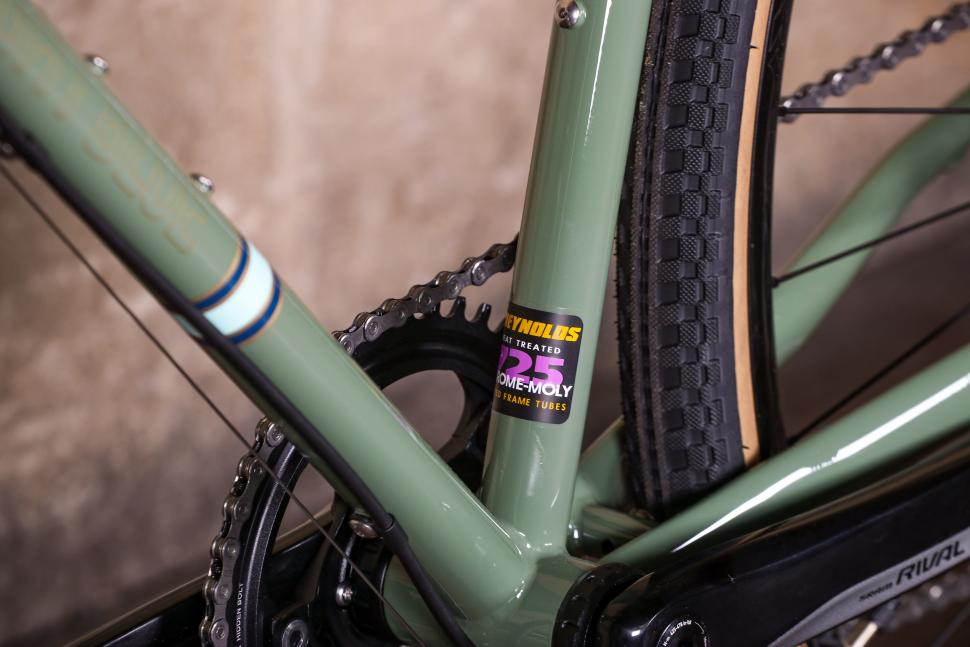
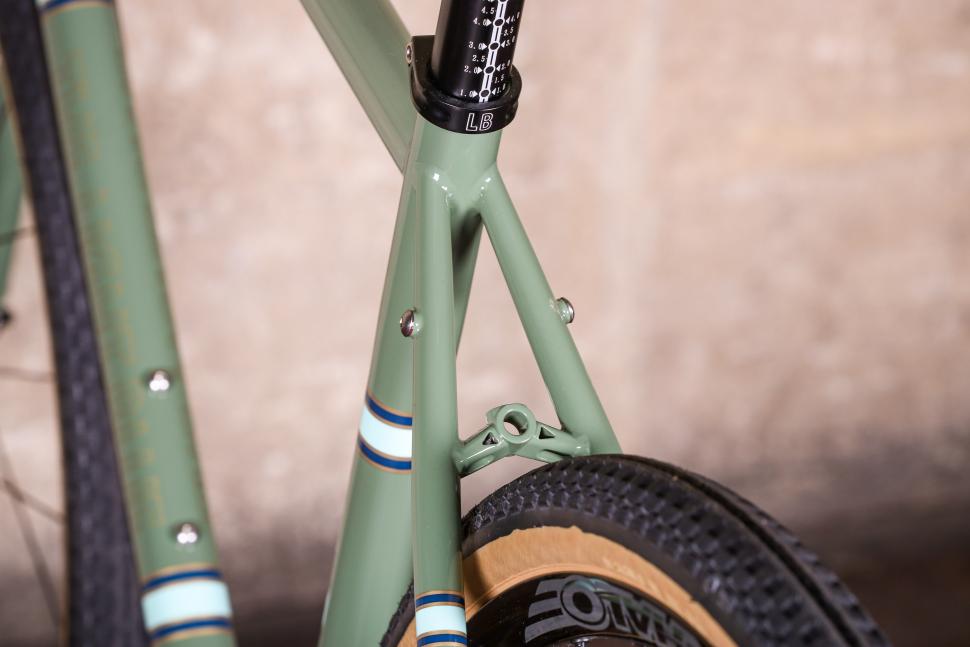

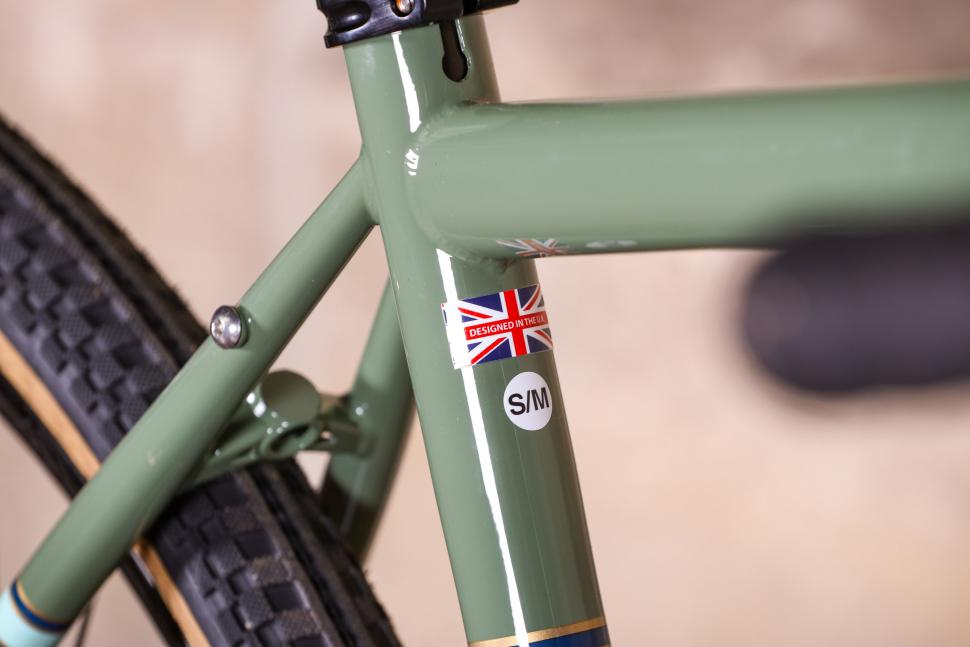

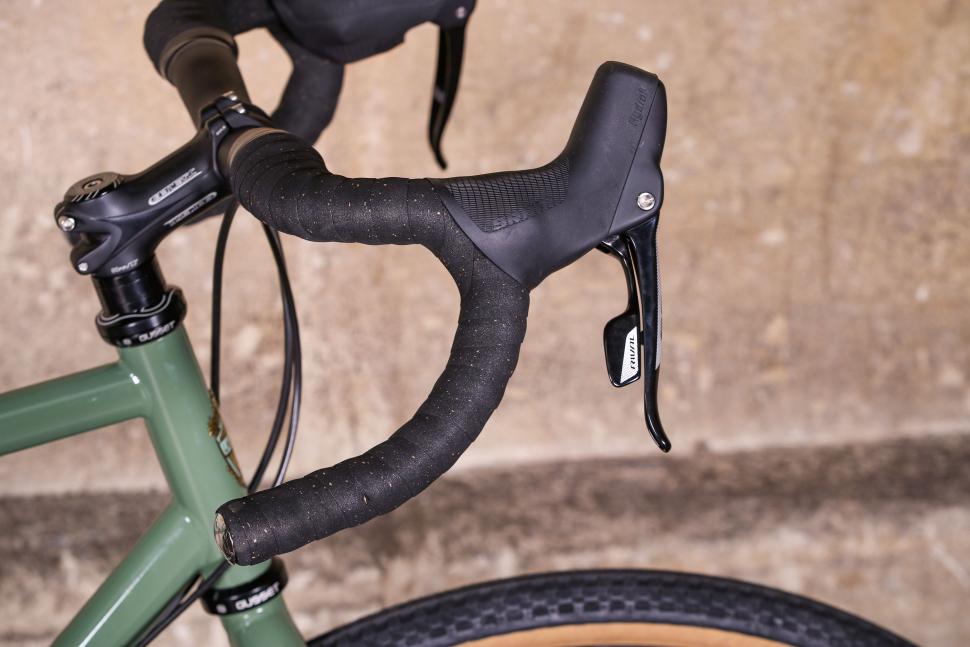


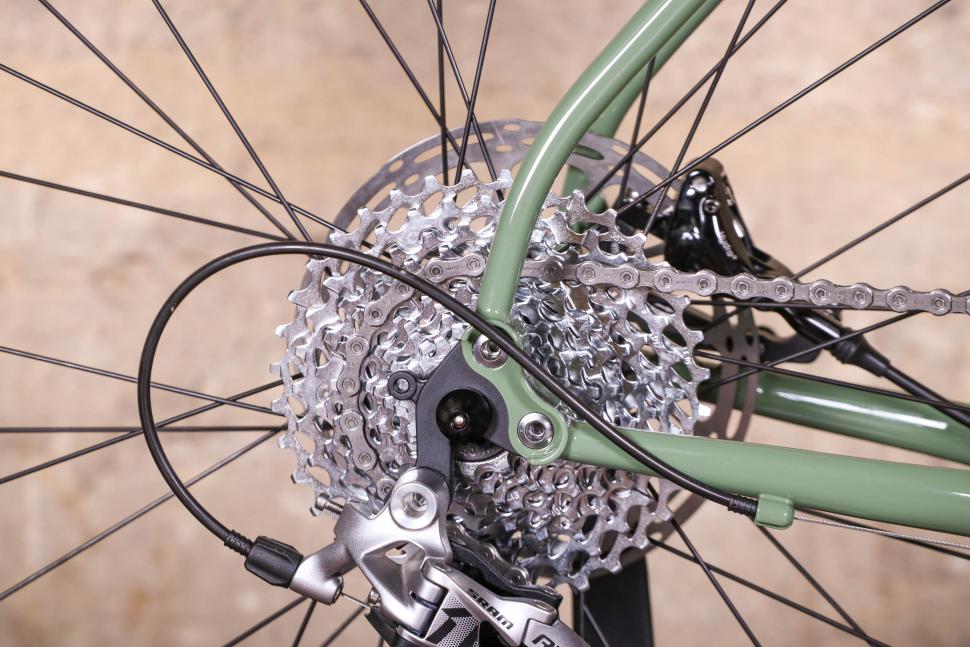
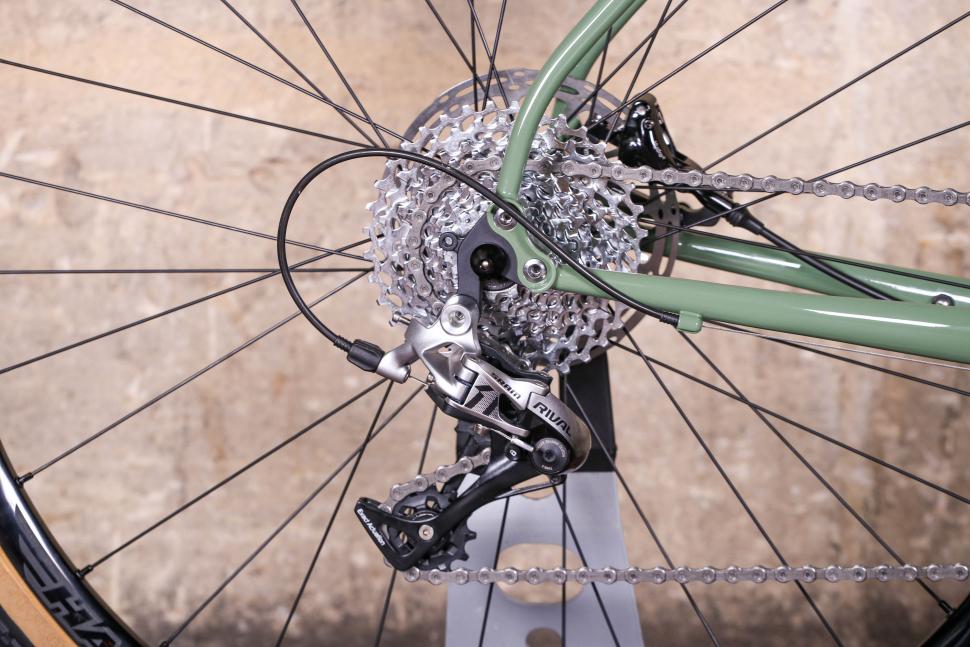
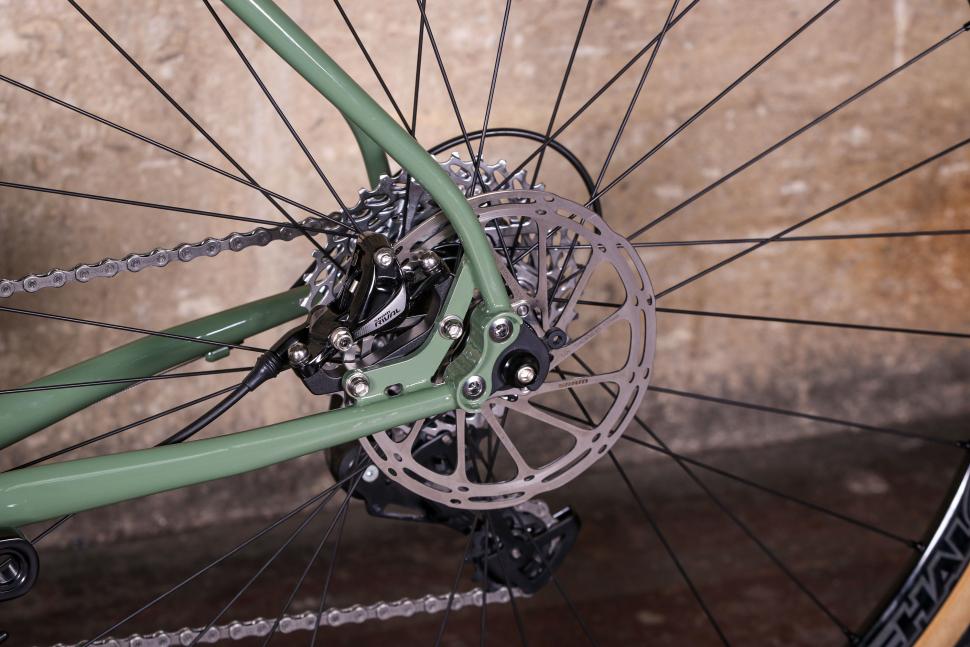
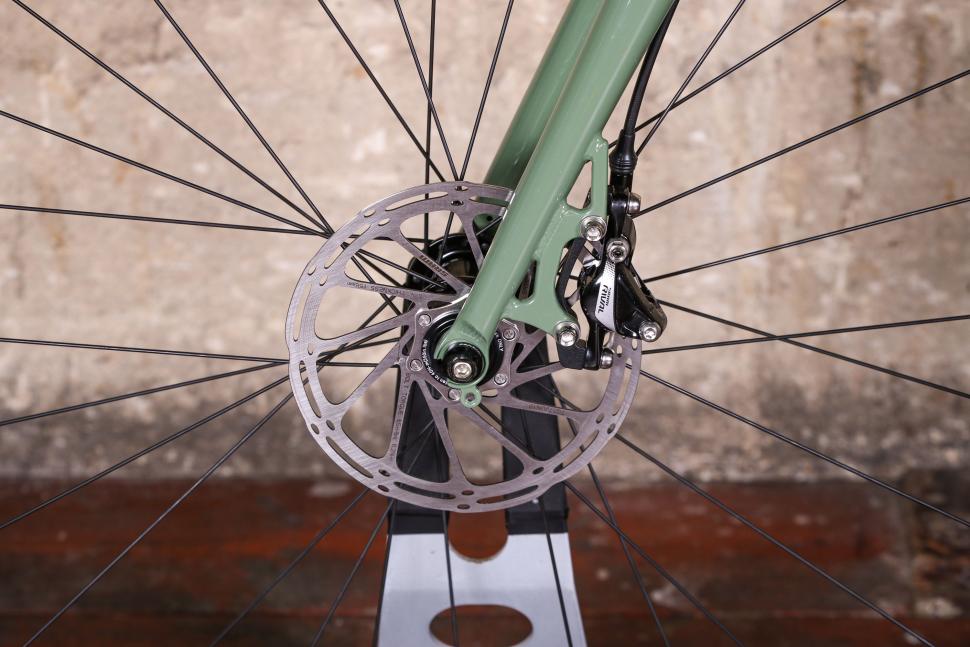

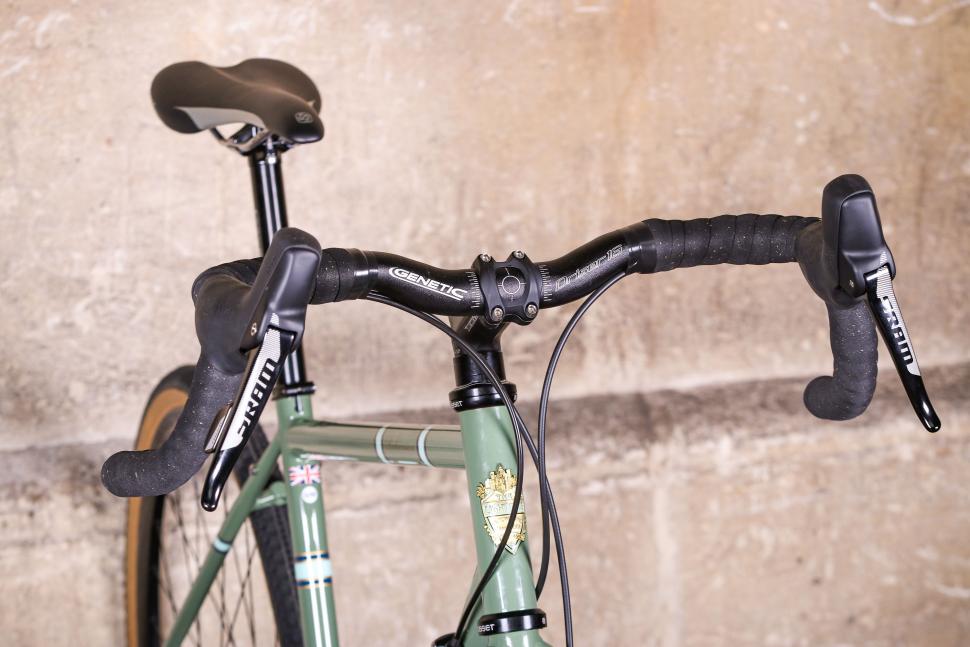
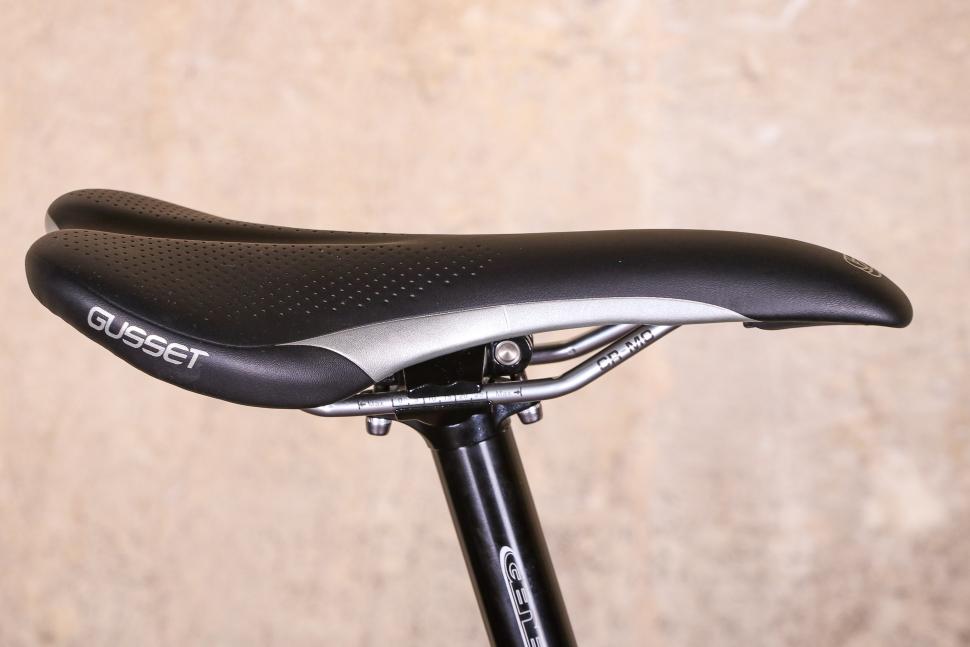



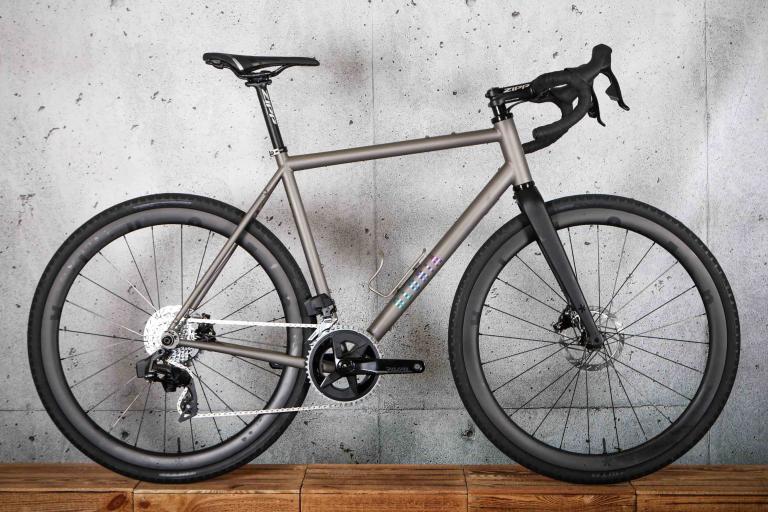

Add new comment
7 comments
I love the Light Blues paint jobs but can't help feeling this is on the pricey side. 10% more gets you a Fairlight Secan with 853, Hunt Wheels, 105 and more mounts.
That stem looks odd too short length and high rise.
That is a lovely looking bicycle. I do love the look of a steel frame, which also has steel forks and exposed headset cups. Class.
A fine understated by nice paintjob as well, indeed the branding is hardly noticable.
There's something appealing about those skinny steel tubes, isn't there?
Nice looking bike, but surely on a bike that is clearly designed to be versatile with endurance and bike packing type rides easily within it's remit, only having the two 'traditional' cage mounts is a pretty big mistake.
A bike like this should have two cage mounts on the forks, and at least the now fairly standard extra mounting point under the down tube.
Ideally though it should also have a set of mounts on the top tube for 'fuel pods/tri' style bags, and maybe three mounting points under the top tube to allow for direct mount of frame bags without the need to straps.
200 guys ride the TrancConti. Why would you plan a bike for the 2%. Plan a bike ike this for the 98% of the market. NORMAL riders of us ride 3 times week with a big week in the summer, 10 big weekends and three big days. how many of those days do you not pass a petrol station each two hours. All these bikepacking bags gathering dust. I ride 250km days and plan to stop every two hours. Who wants to carry extra water all day
They might not choose an 11kg bike to do it either.... But I guess like most brands these days, they are selling aspiration to office workers...
Because it's very easy for a fair amount of the cycling population to get into doing big rides that take you into the middle of no-where, especially on a bike like this that allows you to continue on forest roads when the tarmac runs out.
Bottle cage bosses are for more than just water - I stick on an anything cage and carry my jacket or other similar stuff, and/or use a bottle cage to carry a tool bottle.
And then if I'm going into the middle of no-where, I either need more water or I need to carry a water filter so that I can take water from streams, and the filter has to be carried somewhere. Far more pleasant if that's on the bike instead of in a backpack or similar.
And then there are multi day trips carrying a lightweight tent etc .... again, bottle cage type mounts make life much easier when strapping stuff on the bike, even if using the in vogue, normally strap on, bike packing bags to keep things relatively light and the weight that is there relatively central and evenly distibuted. I don't like panniers because it changes the handling of the bike too much.
Loads of people are expanding their horizons by going beyond the 'two bottles max and bare minimum of other kit, tarmac racer lookalike' and finding lots of quiet, interesting places to visit so that their rides become more than just a ride.
This bike is ideal for that if it weren't for the lack of mounts.